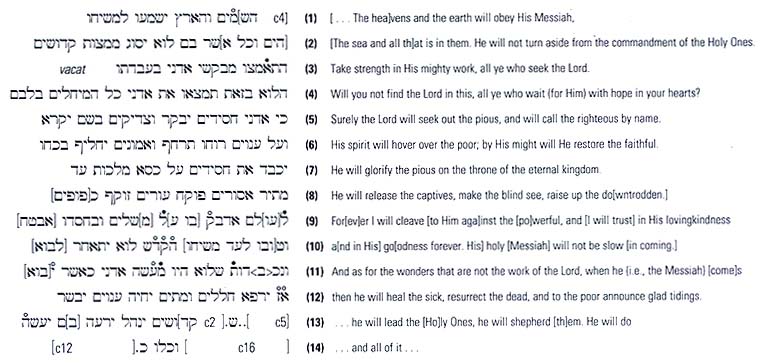The Messiah Text: 4Q521 and a Line-by-Line Analysis
Sidebar to: The Messiah at Qumran

The Hebrew text contains markings used by scholars to indicate the state of the original text. A lower-case c followed by a number, such as c4 in the first line, indicates the estimated number of letters lost in a missing section of a line. A filled-in circle above a letter indicates a damaged letter whose proposed reading seems almost certain; an open circle above a letter indicates a damaged letter whose proposed reading is uncertain. A period on the bottom of a line indicates the presence of an extremely damaged letter. Vacat indicates a space left empty by the scribe. The signs < and > on either side of a letter indicate that the letter had been written above the line by the scribe after he had detected a scribal error.
A recently released text from the Dead Sea Scrolls, known as 4Q521, reflects an extraordinarily close relationship to early Christian messianic beliefs. Above are 14 lines from column two of that text, which are the most substantially preserved part of it. In accord with scholarly convention, the parts in brackets have been reconstructed on the basis of surviving portions. Those who wish to analyze the text more closely will find these line-by-line comments helpful:13
Lines 1–2:
The restoration of “heavens” in line 1 is obvious.
Join the BAS Library!
Already a library member? Log in here.
Institution user? Log in with your IP address.

